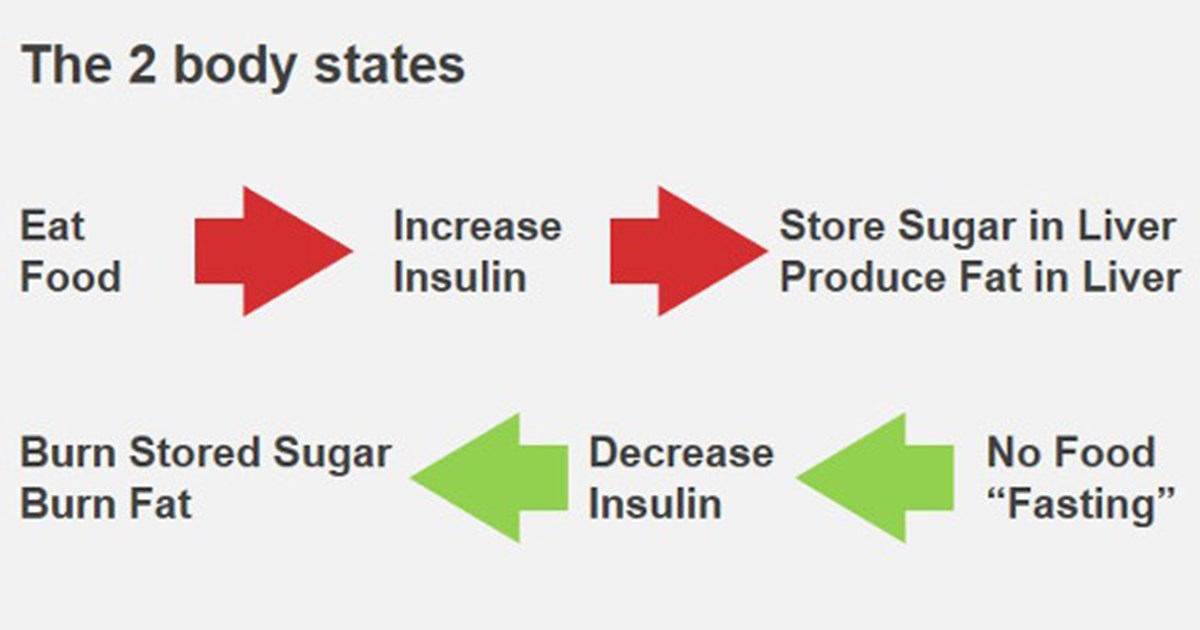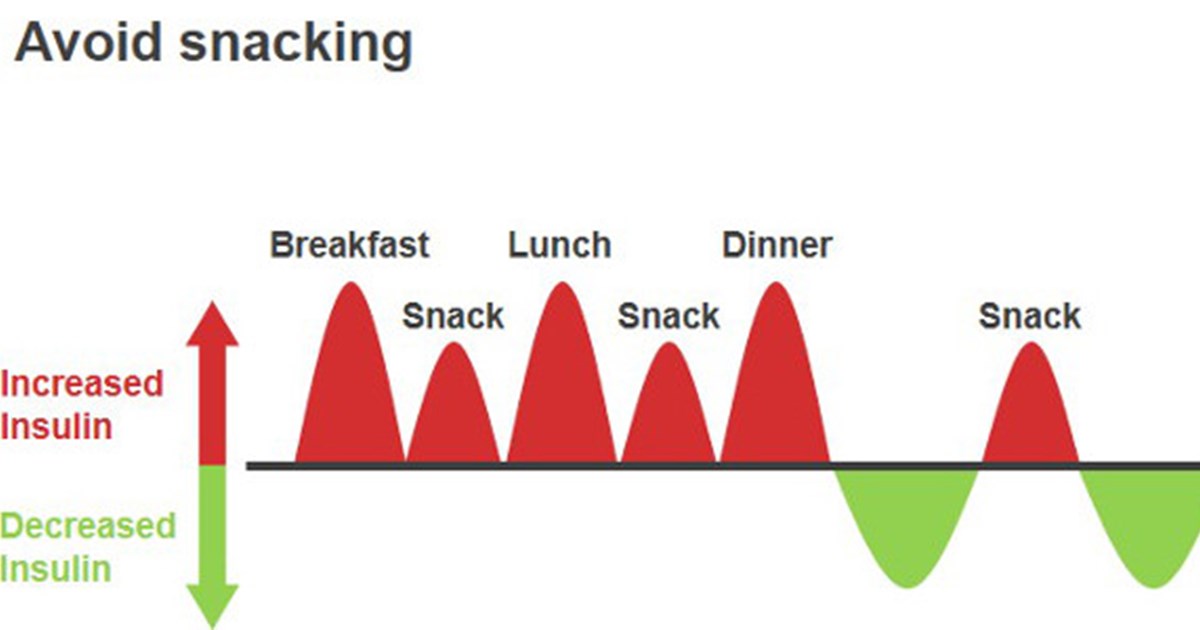Intermittent fasting
Intermittent fasting is an approach that many people find works for them. It can help you achieve a reduction in weight, blood sugar and diabetes medication.
There are two main options:
 |
Firstly the 5:2 diet, where you eat normally for 5 days a week then eat only 500-600 calories on the other two days. |
 |
Or secondly, time restricted eating, where you have a long period in the day when you don’t eat. With time restricted eating, most people choose a 16:8 cycle, which involves not eating for 16 hours of the day, then having an 8-hour eating ‘window’. Generally, this is done daily or almost daily. |
But what happens to your body while you fast?
During a fast, your body can be in 2 different states:
- The fed state is when insulin is high and the body is in storage mode (glucose gets stored as fat or as glycogen in the liver).
- And the fasted state, when insulin is low and the body burns energy stores. Intermittent fasting makes the body burn fat in the absence of glucose.
Spending time in the fasted state is actually a form of exercise – “a metabolic workout”. Extending time in the fasted state improves the ability to burn fat efficiently and quickly. It takes 12 hours after the last meal to reach the fasted state, so ideal regimes include 16:8 (where you only eat during an 8 hour “window”) and 20:4 (where you only eat during a 4 hour window – more challenging!).

If you decide to try intermittent fasting remember to avoid snacking, as this would disrupt the effect.

Useful Resources
The books listed below can really help with intermittent fasting to support weight loss and remission from Type 2 diabetes








